 |
Jesper Mørk, Professor
Center Leader of NanoPhoton
As Center Leader, I hold responsibility towards the Danish National Research Foundation of the scientific progress in NanoPhoton, the education activities as well as the economy. I will take part in all Workpackages, but my own research will be mainly focused on EDC cavities as the basis for strong light-matter action, few-emitter nanolasers, and nonlinear switching.
|
 |
Lotte Lykke Pedersen, Administrative Coordinator
I deal with the administrative activities of NanoPhoton. This means planning and handling meetings, workshops and conferences and coordinating and collecting all reporting to the DNRF and various other tasks.
|
 |
Søren Stobbe, Professor
Leader of WP1: Extreme dielectric confinement of light
I am heading the research in WP1, which is concerned with understanding the fundamental limits to the light-matter interaction strength, realizing optical nonlinearities at the few-photon level using EDC cavities, and exploring topological photonics in EDC systems.
|
 |
Kresten Yvind, Professor
Leader of WP 2: Nanoscale optoelectronic devices and their integration with electronics
Expert on design, fabrication and characterization of photonic and optoelectronic semiconductor devices.
|
 |
Ole Sigmund, Professor
Leader of WP3: Theory and Topology Optimization
Apart from being WP Leader I will head the topology optimization activities in NanoPhoton. My background is mechanical engineering but I have gained insight into nano-photonics from collaborations with Fotonik people for last 15 years. My group has pioneered the use of inverse design methods in nano-photonics and we will continue this work focused on EDC cavities and with the inclusion of manufacturing aspects and multi physics couplings in the NanoPhoton project.
|
|

|
Elizaveta Semenova, Senior Researcher
Leader of WP 4: Nanofabrication and nanoscopy
I am the leader of WP 4 and the research conducted therein, which is focused on advanced epitaxial methods and nanoscopy. My main scientific interest is in the development of new epitaxial methods with a strong weight on III-V compound semiconductors with the aim to enable new material properties and device functionalities. Furthemore, I pursue their integration with the other material including silicon.
|
 |
Martijn Wubs, Professor
Nanoscale quantum optics, with an interest in collective quantum phenomena. Within NanoPhoton, I study how quantum emitters, including novel light sources in 2D materials, interact with EDC cavities and waveguides.
|
 |
Nicolas Stenger, Associate Professor
I am specialized in nanophotonics with focus on strong light-matter interaction as well as the investigation of the optical properties of individual quantum emitters in two-dimensional materials. In order to characterise these systems optically I lead experimental activities on far- and near-field spectroscopy. I am also expanding my activities to the field of photonics in low-dimensional materials.
|
 |
Sanshui Xiao, Associate Professor
2D materials integrated with EDC cavities, Topological photonics.
I work on 2D materials integrated with EDC cavity, specifically exploring exciton-photon interactions, and demonstrating extreme spontaneous and stimulated emission, and I also work on fundamental aspects light confinement with the concept of topological photonics.
|
 |
Andrei Laurynenka, Associate Professor
Expertise in metamaterials, metasurfaces, epsilon-near-zero materials and near-zero-index waveguides, numerical analysis of linear and nonlinear optical waves propagation.
|
|

|
Rasmus Ellebæk Christiansen, Associate Professor
Topology Optimization based inverse design and numerical modelling of wave propagation phenomena and electromagnetism.
WP3: Theory and Topology Optimization. In NanoPhoton, I work with Topology Optimization to design EDC structures and topological structures for a wide range of applications. To this end I research and develop novel topology optimization based tools and methods, working among others to integrate fabrication limitations and design robustness directly in the design procedure to facilitate the reliable fabrication of designs, hereby bridging the gap between numerical models and experiments
|
 |
Thomas Christensen, Associate Professor
I am interested in the realization and manifestations of topological phenomena in photonic systems, especially in symmetry-protected topological phases. Expertise includes photonic crystal design and analysis, light-matter interaction, topological band theory, and group theory
|
 |
Philip Trøst Kristensen, Senior Researcher
Electromagnetic and quantum optical theory of EDC cavities. I work on fundamental aspects of light-matter interaction in EDC cavities to set up electromagnetic and quantum optical models of EDC cavities and coupled cavity-waveguide based integrated optics. |
 |
Mikkel Heuck, Senior Researcher
Theory of light-matter interaction: Photons interacting with photons and photons interacting with classical electromagnetic fields via chi(2) and chi(3) nonlinearities. Integrated photonic circuits: Cavities and heterogeneous integration of different material systems. Quantum information science: Using optical nonlinearities to perform elementary operations relevant for quantum information processing.
|
 |
Yi Yu, Senior Researcher
Waves, dynamics
As a Senior researcher, I investigate, theoretically and experimentally, light-matter interactions in EDC cavities with a special focus on active structures and their explorations for ultra-small optoelectronic devices such as lasers, modulations and detectors at nanoscale. I am particularly interested in wave phenomena and dynamics in both the classical and quantum regimes.
|
 |
Shima Kadkhodazadeh, Senior Researcher
I work on WP4. My activities are focused on probing the structural and optical properties of EDCs and related structures with electron-beam imaging and spectroscopy methods.
|
 |
Babak Vosoughi Lahijani, Assistant Professor
WP1: I am interested in questions of how tight a photon can be confined in spacetime? What is its consequence on light-matter interaction? And how the extreme regime of photon confinement can be explored experimentally
|
 |
Meng Xiong, Academic Technician
As a research assistant, I work on design, fabrication and characterization of InP active EDC structures based on semiconductor quantum dots and quantum wells, with a special focus on explorating them for nanolasers and nanodetectors as well as their integrations for ultradense optoelectronic circuits.
|
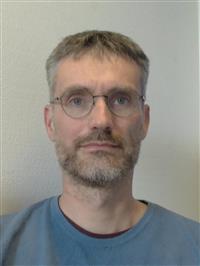 |
Michael Juhl, Research Consultant
Extreme confinement of light, with focus on optical characterization down to the few-photon level. Experience with metasurfaces, polarimetry, nanofabrication, topology optimization.
|
 |
Bingrui Lu, Research Consultant
With my extensive nanofabrication experience and skills on the silicon platform, I focus on realizing EDC cavities and other nanophotonic devices and systems with extreme features in high precision and fine control in the cleanroom.
|
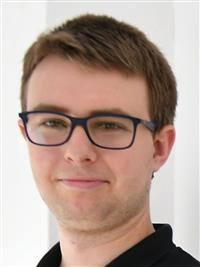 |
Pawel Holewa, Postdoc
I work on the design, fabrication, and characterization of nano-optoelectronic devices in the III-V on Si integrated platform. My focus is on implementing a combination of the buried heterostructure approach for active material epitaxy with the EDC cavities for application in nanolasers, nanodetectors, and quantum emitters.
|
 |
Sergei Lepeshov, Postdoc
My research focuses on the theory of extreme light-matter interaction phenomena. Specifically, I am studying the Purcell effect of the emitters embedded into the silicon bowtie microcavities.
|
 |
Monia Runge Nielsen, Postdoc
During this project, I will use advanced electron microscopy to image light-induced charge carrier accumulation in photocatalysts.
|
 |
Hanlin Fang, Postdoc
I focus on studying the exciton physics in 2D materials and their use in advancing integrated optophotonic applications.
|
 |
Karolina Polczynska, Postdoc
I work on a project that tackles key challenges in quantum photonics, including efficient light coupling between different components and minimizing signal processing losses. We leverage Silicon Nitride for ultra-low loss pathways and Indium Phosphide for active devices, ensuring compatibility with existing optical networks while enhancing quantum circuit performance I am developing devices, that will become effective sources of indistinguishable single photons for telecom wavelength. My area of expertise is epitaxy and microfabrication.
|
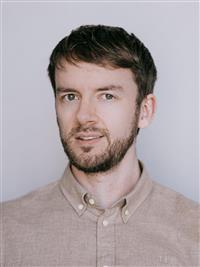 |
Mattias Rasmussen, Postdoc
I am working on optical and electrical characterization of photonic integrated circuits designed to explore the linear and nonlinear interactions between light and matter.
|
 |
Corné Koks, Postdoc
My research is on single photon emitters in hBN. We look at their spectroscopic and temporal properties to get insights both of the origin and the environment of the emitters.
|
 |
Dayang Li, Postdoc
Numerical simulation and optical characterization of extremely-confined non-radiative states in nanocavities, including anapole states and bound states in a continuum.
|
 |
Baptiste Lefaucher, Postdoc
I work on the development of quantum dot-based photon sources in the telecom C-band for integrated quantum photonics on the silicon nitride platform, and experimental characterization of intensity noise in integrated nanolasers.
|
 |
Marek Mikulicz, Postdoc
My research focuses on integration of QD-based single-photon sources with photonic platforms and on template-assisted selective epitaxy which enables the monolithic integration of III−V-based active photonic components, such as photodetectors and lasers, onto silicon via a flexible CMOS-compatible process.
|
 |
Thor August Schimmell Weis, Postdoc
I work on design, fabrication, and characterization of nanoelectromechanical systems. These can be integrated with silicon photonics to produce tunable photonic devices and reconfigurable photonic circuits.
|

|
Avishek Sarbajna, Postdoc
I am investigating light-matter interaction in active EDC, buries heterostructures and photonic crystal cavities.
|
 |
Alexandra Palici, PhD Student
My PhD project addresses the challenges of practical quantum repeaters implementations through a novel device concept that provides control over nonlinear light-matter interactions in photonic integrated circuits (PICs). One aspect is control over the spatio-temporal degrees of freedom of photons to enable their use as mediators of interactions between long-lived solid-state quantum memories. Another aspect is control over photon-photon interactions mediated by nonlinear light-matter interactions. The project involves fundamental theory, design, simulation, fabrication and characterization.
|
 |
Frederik Schröder, PhD Student
My research focusses on investigating light-matter interactions in nanocavities coupled to 2D materials, which could be exploited for novel (quantum) light sources. I am carrying out photoluminescence, scattering and reflection measurements as well as measurements with a scattering-scanning near-field optical microscope.
|
 |
Kristian Seegert, PhD Student
My research is focused on theory and experimental characterization of nanostructured lasers and, in particular, the dynamical aspects. I make use of dynamical systems theory, coupled-mode theory, and numerical simulations to model active photonic nanostructures as well as the dynamical response of these systems.
|
 |
Beñat Martínez de Aguirre Jokisch, PhD Student
WP3: My work is based upon the inverse design of nanophotonic structures using topology optimization. I am interested in understanding the fundamental physics of light-matter interaction with special focus on optimizing nanostructures to exploit transient and non-linear phenomena, while taking into account fabrication limitations.
|
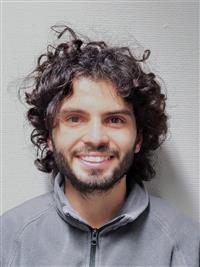 |
Amedeo Carbone, PhD Student
My research work is on single-photon emitters (SPEs) in few-layers hexagonal boron nitride (hBN), both on the samples production side and on their optical characterization. The next step in my work will be to integrate these SPEs in extremely confined nanocavities to enhance their electromagnetic properties.
|
 |
Benjamin Falkenberg Gøtzsche, PhD Student
I am investigating the theory of optical manipulation of matter. My work is focused on optical trapping and near-field effects in dielectric nano-cavities featuring extreme dielectric confinement of light.
|
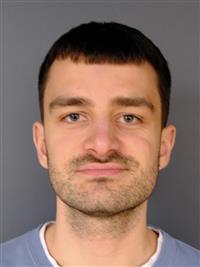 |
Mathias Marchal, PhD Student
During my PhD I will continue the research on state-of-the-art nanolasers in the III-V on Si integrated platform developed at the Quantum and Lasers Photonics Group at DTU. The work will involve modelling, design optimization, fabrication, and characterization of the nanolasers and focusses on improving the performance as well as gaining a deeper understanding of the underlying physics.
|
 |
Simon Klinck Borregaard, PhD Student
I mainly work on fabrication and experimental characterisation of nanolasers based on subwavelength dielectric nanostructures. My tasks include numerical design, electron beam lithography, semiconductor dry etching, post-processing, and optical characterisation.
|
 |
Christian Camilo Ruiz, PhD student
I work on epitaxial growth of III-V semiconductor heterostructures. My research is focused on advancing self-assembled quantum dot growth methods and implementing new approaches to tailor the properties of individual QDs as well as array properties.
|
 |
Michelle Wang, PhD student
My research focuses on topological phenomena in photonic systems. I study photonic band structures using the language of group representations, with potential applications for photonic crystal design
|
 |
Matias Bundgaard-Nielsen, PhD student
I work on a deep theoretical understanding of the quantum optics of nanostructures with Extreme Dielectric Confinement (EDC), including developing efficient numerical simulation tools. In the project, I will work on identifying promising structures for experimental exploration by investigating, e.g., nanolasers with reduced quantum noise.
|
 |
Odysseas Kosmatos, PhD student
I will do a PhD Project on selective epitaxy of III/V Si nanostructures for photonic application. It is about theoretical and experimental investigation of nucleation processes of III-V compounds on silicon. Developing and applying new epitaxial methods for realizing III-V photonics devices monolithically integrated into the Si-platform.
|
 |
Valdemar Christian Bille-Lauridsen, PhD student
I study nanobeam structures and the extreme confinement of light. As part of my work, I do theoretical modelling of nanocavity emitters and perform experimental characterisations of fabricated nanostructures. My research focuses on enhancing the light-matter interaction and realising new, improved device designs.
|
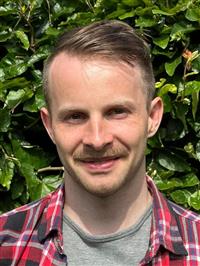 |
Nikolaj Balslev Hougs, PhD student
My research is focused on light-matter interaction and (extreme) dielectric confinement of light, especially promoting the former via the latter. This includes both design, fabrication and characterization of devices wherein this is possible.
|
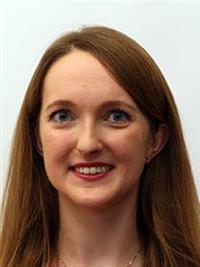 |
Christine Pepke Gunnarsson, PhD student
My project is on designing a tunable source of entangled photon pairs operating in the telecom C-band. I work with simulations where I use shape optimization to design a structure which maximizes the desired figure of merit, while respecting the constraints on the optical properties. I also work in an optical laboratory where we want to characterize and electrically tune our sources.
|
 |
Jørn Marcher Hvam, Professor Emeritus
Broad experience in nanophotonics including plasmonics and THz technology. Focus on ultrafast nonlinear optical spectroscopy of low-dimensional semiconductor nanostructures investigating excitons, biexcitons and polaritons including cavity polaritons and surface plasmon polaritons.
|
 |
Ole Hansen, Professor Emeritus
WP 2: Nanoscale optoelectronic devices and their integration with electronics.
Experience in silicon micro- and nanotechnology, electronic device physics, technology and characterization.
|